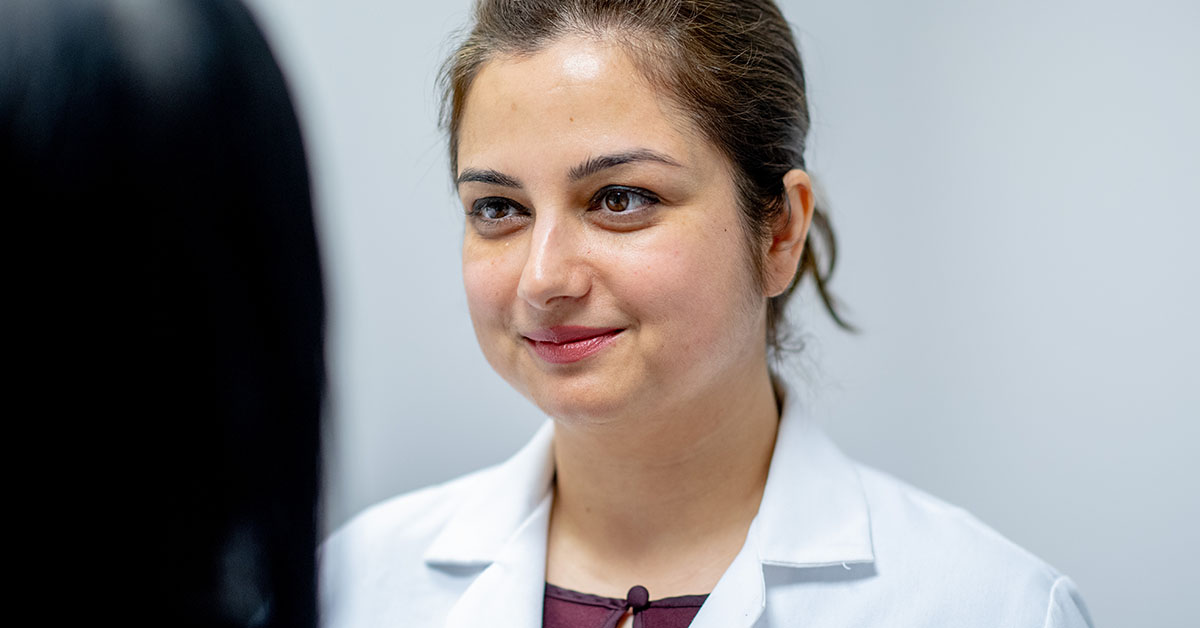
What is a Bone Marrow Transplant? And More Questions, Answered
-
Bone marrow transplant (BMT), also known as stem cell transplant, is an advanced procedure used to treat a number of blood cancers such as acute leukemia, multiple myeloma, relapsed lymphoma, and other conditions. Here, Rashmi Khanal, MD, a hematologist-oncologist in the Department of Cellular Therapies and Fox Chase-Temple University Hospital Bone Marrow Transplant Program at Fox Chase Cancer Center, answers some important questions about BMT.
What happens during a BMT?
Bone marrow is the “soft tissue” inside the bones that makes blood-forming cells, which are also called stem cells. During a BMT, healthy stem cells are transplanted into the damaged or diseased marrow. The goal is for the healthy cells to promote the growth of fresh new marrow that is free of disease.
Which type of patient can benefit from BMT?
BMT can be used to treat blood cancers like advanced lymphoma, acute leukemia, and multiple myeloma (to name a few). BMT is often used as a second option when conventional chemotherapy hasn’t been effective to provide long-term disease control. But it can also be a first-line treatment for patients with very aggressive blood cancer.
That said, not every patient is a good candidate for a transplant. BMT is not well tolerated if you have other significant medical issues. And, because the transplant process is a major commitment, a strong support system is a must.
How does the procedure work?
Despite the surgical-sounding name, the process is similar to a blood transfusion. BMT starts with collecting healthy stem cells, either from the patient (autologous) or from a donor (allogenic).Then the patient is given additional chemotherapy to kill off any remaining cancerous cells and to condition the marrow. Immediately following this, the healthy stem cells are infused intravenously. As the cells make their way into the bone marrow, they start growing healthy new blood cells. The whole process typically takes 3–4 weeks (accounting for time for marrow recovery).
Can BMT cure blood cancer?
Yes. BMTs are often a cure for leukemia and late-stage lymphoma. But transplants are also beneficial for blood cancers that aren’t curable. For instance, BMT can offer a longer remission time for patients with multiple myeloma.
There are two main types of BMTs—autologous and allogenic. What’s the difference?
BMTs can either be autologous or allogenic. Autologous transplants use a patient’s own healthy stem cells and are typically performed on patients with advanced lymphoma or multiple myeloma. Allogenic transplants use donor cells, which can come from a family member or a donor registry. They’re typically used for MDS/leukemia patients but can also be a second option for lymphoma and multiple myeloma patients who didn’t have success with an autologous transplant.
Deciding which type of transplant a patient will receive is dependent upon a number of factors and one that your bone marrow transplant team will walk you through.
What are the risks of a BMT?
BMTs aim to wipe a patient’s bone marrow clean. That gives their marrow a fresh, healthy start—but it also creates an extremely high risk for infection. That’s especially true for allogenic transplant patients since they also have to take immunosuppressant drugs to keep their body from rejecting the donor cells. Transplants can also set the stage for anemia and bleeding problems. It is a very complex procedure and there are a number of factors that go into it. It is also a procedure that, for many patients, is life-saving.
Can a patient undergo a BMT more than once?
It depends. If a patient had an autologous BMT and it wasn’t effective, they may be able to attempt a second transplant or an allogenic transplant.
What should you look for when deciding where to have a BMT?
Seeking a comprehensive cancer center with hematologic oncologists who have dedicated experience with performing BMTs is a must. The center should also be accredited by the Foundation for the Accreditation of Cellular Therapy (FACT), which is a gold standard quality measure of excellence in both national and international standards. Just as important, you want access to a multidisciplinary care team that will support you through every aspect of your transplant—including psychological, social, and financial. Everyone on the team specializes in BMT—physicians, nurses, advanced practice clinicians, etc. The combination of all of these things makes the Fox Chase-Temple University Hospital Bone Marrow Transplant Program unique.
